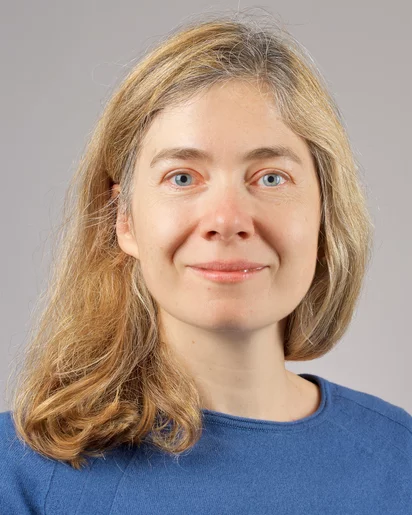Biography
Olga Safonova is a senior scientist at the Paul Scherrer Institute. She received her degree in chemistry and completed her PhD thesis in inorganic chemistry at Lomonosov Moscow State University in Russia studying the mechanism of operation of gas sensors based on semiconductor oxides. Then she moved to France, where she was a postdoc and became a staff scientist at the European Synchrotron Radiation Facility performing research in the field of heterogeneous catalysis using X-ray absorption and diffraction methods. Since 2010, she is a senior scientist at the Paul Scherrer Institute in the Operando spectroscopy group shared between the Energy and Environment and the Photon Science Divisions.
Institutional Responsibilities
Olga Safonova participates in the management, operation, and ugrade of SuperXAS beamline at the Swiss Light Source. Currently, she currently supervises a group of PhD students being a PI of the Swiss National Science foundation Sinergia project “Making Carbon-Carbon Bond from CO2: from Discovery to Molecular-Level Understanding and Guiding Principles” and Horizon 2020 EU project “CATCHY: Design, implementation and production upscaling of novel, high-performance, cluster-based catalysts for CO2 hydrogenation.”
Teaching
Committees
2023 - now Member of Executive Board of International X-ray Absorption Society (IXAS)
2022-now European Synchrotron Radiation Facility (ESRF) proposal review committee
Scientific Research
Safonova’s scientific interests are focused on understanding of the structure-activity relationships in heterogeneous catalysts involving nanoparticles and cationic species on oxide surfaces. Research of Olga Safonova uses new development of time-resolved spectroscopic methods to access the structure and reactivity of active sites in heterogeneous catalysts on the atomic scale. Her main expertise lies between chemical kinetics and in situ/operando X-ray absorption and emission spectroscopy (XAS and XES) techniques based on hard X-rays. She currently leads research projects focused on fundamental understanding of CO2 and CO hydrogenation processes at the metal-oxide interfaces.
Significant Achievements
The primary motivation for my research is my curiosity to uncover the nature and reactivity of active sites driving catalytic reactions. This work requires expertise in chemistry, spectroscopy, and reactor engineering. The main output of my research is new methodologies and setups for understanding the reactivity of catalysts at realistic operation conditions.
My first significant achievement is demonstrating the unique ability of operando time-resolved X-ray absorption spectroscopy (XAS) methods for monitoring the involvement of metal redox couples in catalytic cycles over various heterogeneous catalysts. I started this research in 2013 while investigating the oxygen activation mechanism during low-temperature CO oxidation over platinum nanoparticles on ceria [1]. We designed a transient experimental strategy consisting of periodic switching off the oxygen supply to the Pt/CeO2 catalyst under CO oxidation conditions. We combined it with highly sensitive resonant X-ray emission spectroscopy (RXES). These findings allowed the detection of short-lived reversible Ce3+ intermediate species. Quantitative matching of the Ce3+ formation rate in the absence of oxygen and the steady state rate of CO2 formation proved that the reversible Ce4+/Ce3+ species are involved in oxygen activation at the active sites at the Pt-CeO2 interface. Besides the active Ce3+, we also discriminated long-lived spectator Ce3+ species, which were not involved in catalysis. Since the formation of Ce3+ was the rate-limiting step for CO oxidation over the Pt/CeO2 catalyst, we replaced CeO2 support with Ce0.5Sn0.5O2. We produced a more active Pt/Ce0.5Sn0.5O2 catalyst, where the rate-determining step is inverted, and Ce3+ formation is faster than Ce3+ oxidation [2]. Afterward, we extended a similar methodology for other systems and studied a more extensive variety of catalytic processes and redox metals [3-5]. Examples are the oxidation of alcohols over titania- and ceria-promoted VOx-based catalysts and CO oxidation over CuOx-CeO2 and Pt-FeOx catalysts.
[1] Kopelent, R., van Bokhoven, J. A., Szlachetko, J., Edebeli, J., Paun, C., Nachtegaal, M., & Safonova, O. V. (2015). Catalytically Active and Spectator Ce3+ in Ceria-Supported Metal Catalysts. Angewandte Chemie-International Edition, 54(30), 8728–8731 DOI
[2] Kopelent, R., Tereshchenko, A., Guda, A., Smolentsev, G., Artiglia, L., Sushkevich, V. L., Bugaev, A., Sadykov, I. I., Baidya, T., Bodnarchuk, M., Van Bokhoven, J. A., Nachtegaal, M., & Safonova, O. V. (2021). Enhanced Reducibility of the Ceria-Tin Oxide Solid Solution Modifies the CO Oxidation Mechanism at the Platinum-Oxide Interface. ACS Catalysis, 11(15), 9435–9449 DORA
[3] Safonova, O. V., Guda, A., Rusalev, Y., Kopelent, R., Smolentsev, G., Teoh, W. Y., Van Bokhoven, J. A., & Nachtegaal, M. (2020). Elucidating the Oxygen Activation Mechanism on Ceria-Supported Copper-Oxo Species Using Time-Resolved X-ray
Absorption Spectroscopy. ACS Catalysis, 10(8), 4692–4701 DORA
[4] Zabilska, A., Clark, A. H., Moskowitz, B.M., Wachs I.E., Kakiuchi, Y., Copéret, C., Nachtegaal, M., Kröcher, O., Safonova, O.V. (2022). Redox Dynamics of Active VO x Sites Promoted by TiO x during Oxidative Dehydrogenation of Ethanol Detected
by Operando Quick XAS. JACS Au 2022, 2, 3, 762–776 DOI
[5] Safonova, O. V., Zabilska, A., Zabilskiy, M., Nuguid, R. J. G., Clark, A. H., Nachtegaal, M., & Kröcher, O. (2022). Origin of the Activity Trend in the Oxidative Dehydrogenation of Ethanol over VOx/CeO2. Angew. Chem.Int. Ed.2023, 62, e2023012 DOI
The second significant achievement is the recent development of an experimental methodology for uncovering the nature of catalytically active sites in heterogeneous catalysts based on quantitative correlations of catalytic activity and the concentrations of certain metal species simultaneously detected by operando XAS methods. We validated this approach for PROX catalysts based on supported Pt-FeOx systems, promising for hydrogen purification for fuel cell applications [6,7]. We proved that, in contrast to the common opinion in the literature, Fe2+ species make up the resting state of the most active sites capable of selectively oxidizing CO at ambient temperature. This approach has a high potential for many catalysts, where the same metal can form active and spectator species.
[6] Sadykov, I. I., Sushkevich, V. L., Krumeich, F., Nuguid, R. J. G., van Bokhoven, J. A., Nachtegaal, M., & Safonova, O. V. (2022). Platinum-Iron(II) Oxide Sites Directly Responsible for Preferential Carbon Monoxide Oxidation at Ambient Temperature: An
Operando X-ray Absorption Spectroscopy Study. Angew. Chem.Int. Ed.2023,62, e2022140 DOI.
[7] Ilia I. Sadykov; Dennis Palagin; Frank Krumeich; Igor V. Plokhikh; Jeroen A. van Bokhoven; Maarten Nachtegaal; Olga
V. Safonova Water-assisted generation of catalytic interface: The case of interfacial Pt-FeOx(OH)y sites active in preferential carbon monoxide oxidation. Journal of Catalysis 429 (2024) 115263 DOI.
The third significant achievement is related to the development, back in 2010, of an in situ capillary reactor setup for synchrotron-based X-ray spectroscopy and diffraction for monitoring the catalytic reactions under high pressure [8]. The setup uses a capillary reactor attached to a metal frame with epoxy glue to ensure complete leak tightness. This approach was developed in 2008-2011 for the Fischer-Tropsch reaction of syngas conversion in olefins on cobalt-based catalysts [8]. Similar setups have been copied by many groups (also collaborating with industry) both for high-pressure catalysis and catalysis with air-sensitive materials, which need to be manipulated under air-free conditions. Recently, my scientific interests have shifted to high-pressure catalysis [9,10], towards CO2 hydrogenation necessary for solving global warming and energy problems. In particular, we are trying to rationalize the structure of active sites at the bimetallic interfaces to tune the selectivity to alcohols.
[8] Karaca, H., Hong, J., Fongarland, P., Roussel, P., Griboval-Constant, A., Lacroix, M., Hortmann, K., Safonova, O. V., & Khodakov, A. Y. (2010). In situ XRD investigation of the evolution of alumina-supported cobalt catalysts under realistic conditions of Fischer-Tropsch synthesis. Chemical Communications, 46(5), 788–790 DOI
[9] Docherty, S.R., Phongprueksathat, N., Lam, E., Noh, G., Safonova O.V., Urakawa A., Copéret, C. (2021). Silica-Supported PdGa Nanoparticles: Metal Synergy for Highly Active and Selective CO2-to-CH3OH Hydrogenation. JACS Au, 2021, 1, 4, 450–458 DOI
[10] Jan L. Alfke; Maria Tejeda-Serrano; Sumant Phadke; Andrei Tereshchenko; Terry Z. H. Gani; Lukas Rochlitz; Seraphine B. X. Y. Zhang; Lin Lin; Christophe Copéret; Olga V. Safonova. Boundary Conditions for Promotion versus Poisoning in Copper-Gallium-based CO2–to–Methanol Hydrogenation Catalysts. ACS Catal. 2024, 14, 12, 9166–9175 DOI
Publications
All publications are listed in Google Scholar, ORCID, and DORA repository


